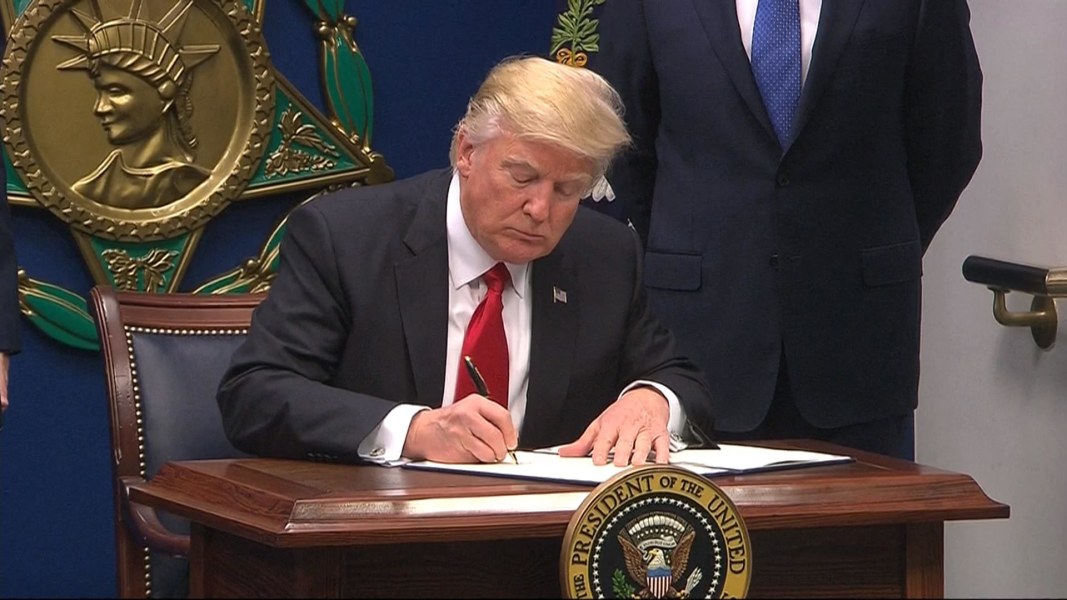April 20, 2018
Smart Asia Pacific pivots beyond a Trump-led America
Pradumna B Rana and Xianbai Ji, RSIS
US President Donald Trump has taken a radically protectionist approach to trade. Trump has launched a series of unilateral moves including increasing tariffs on steel and aluminium imports on national security grounds and announcing plans to impose tariffs on US$60 billion of Chinese imports.
Uncertainties regarding continued access to the US market have forced Asia Pacific countries, for whom trade is an economic lifeline, to pivot beyond Trump-led America by adopting a three-pronged policy response: the acceleration of mega free trade agreements (FTAs), the enhancement of regional connectivity and the deepening of inter regional economic cooperation.
Japan and Australia have taken the lead in pushing through the Comprehensive and Progressive Agreement for Trans-Pacific Partnership (CPTPP or TPP-11) without the United States. This agreement was signed on March 8, 2018 and is expected to come into effect in early 2019, once it is ratified by at least six of the 11 members.
Although the CPTPP suspends or amends 22 US-supported provisions from the original Trans-Pacific Partnership, the CPTPP is still a gold standard agreement. It eliminates tariffs on 95 per cent of merchandise trade between the agreement’s parties while containing many ground-breaking rules relevant to 21st century trade. The CPTPP offers large economic benefits even without US participation.
Several other countries may also join the CPTPP. South Korea says it is assessing the CPTPP’s effect before making a decision. Indonesia, Thailand and even the United Kingdom have expressed interest in joining the accord. Trump has said that he is open to re-joining the trade agreement but only if it involves a ‘better deal for the United States’. This may not happen any time soon.
Asian countries have also accelerated negotiations for the ASEAN-led Regional Comprehensive Economic Partnership (RCEP). If the CPTPP is successful, it should give a boost to RCEP negotiations. The negotiating parties are optimistic that RCEP can be concluded in 2018 under Singapore’s ASEAN chairmanship. To fast-track RCEP, the idea of an ‘RCEP minus X’ formula is gaining traction.
Since RCEP is a mega FTA comprising mostly developing countries, it would not be as transformative as the CPTPP. But its conventional free trade agenda would still confer significant benefits. We estimate that in the medium term, RCEP would generate welfare gains of US$127 billion, compared to US$35 billion from the CPTPP. Cambodia and Thailand are likely to benefit the most from RCEP.
Asia Pacific countries have also stepped up efforts to enhance regional connectivity through infrastructure development, as a second prong to offset US trade protectionism. In 2016, ASEAN unveiled its Master Plan on ASEAN Connectivity. The plan envisions a ‘seamlessly and comprehensively connected and integrated ASEAN’ by 2025. It includes several major region-wide infrastructure projects such as the ASEAN Highway Network.
But the headline-grabbing infrastructure initiative in the region is China’s Belt and Road Initiative (BRI), spearheaded by Chinese President Xi Jinping since 2013. The BRI aims to connect more than 70 countries across the Afro–Eurasian supercontinent via large-scale projects including railways, roads, bridges, ports and pipelines. Despite criticism of a lack of transparency and of China’s debt-trap diplomacy, many developing countries in need of investment finance see the BRI as an attractive proposition.
Figure It out, Guys.
Two connectivity proposals can be viewed as alternatives to the BRI. India is collaborating with Japan under the Asia–Africa Growth Corridor proposal to develop maritime connectivity across Africa, India and Southeast Asia. Australia, India, Japan and the United States are involved in another grouping known as the Indo-Pacific Partnership. Both proposals remain at the consultation stage.
The third prong of the Asia Pacific response to rising US protectionism is the promotion of inter-regional economic cooperation.
On March 5, 2018, the Philippines ratified its FTA with the European Free Trade Association. Australia and New Zealand hope to start trade negotiations with the European Union this year, while ASEAN hopes to resume its stalled region-to-region FTA negotiations with the European Union in the next few months. South Korea signed FTAs in February 2018 with a number of Central American countries. Singapore is negotiating an FTA with the Pacific Alliance (Chile, Colombia, Mexico and Peru).
What shape could the evolving regional trade architecture take? Countries would benefit from joining more than one mega FTA. For example, Vietnam’s real GDP would increase by 1.5 per cent from joining the CPTPP or 3.3 per cent from joining RCEP. If Vietnam joins both, its real GDP would increase by an estimated 4.2 per cent.
Once the CPTPP is ratified, countries party only to the CPTPP (Canada, Mexico, Peru and Chile) should seek RCEP membership. Similarly, the countries party only to RCEP (Cambodia, China, India, Indonesia, Laos, Myanmar, Philippines, South Korea and Thailand) should seek CPTPP membership. This would result in a bloc in the Asia Pacific of 20 countries with membership in both the CPTPP and RCEP.
The advantages of dual membership are access to Chinese and Indian markets through RCEP and valuable exposure to high-quality trade rules through the CPTPP. Countries would not have to choose sides between the Japan- and Australia-led CPTPP and the ASEAN-led RCEP.
Ironically, President Trump may have done more to promote regional and interregional cooperation in the Asia Pacific than the region would have achieved independently.
Pradumna B Rana is Associate Professor at the S Rajaratnam School of International Studies (RSIS), Nanyang Technological University, Singapore.
Xianbai Ji is a PhD candidate at RSIS holding the Nanyang President’s Graduate Scholarship.
Earlier versions of this article appeared here on RSIS and here on the Council on Foreign Relations website.

